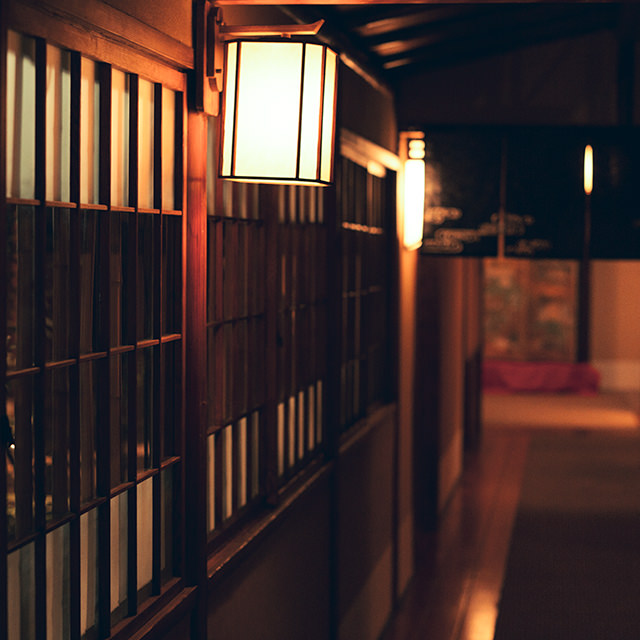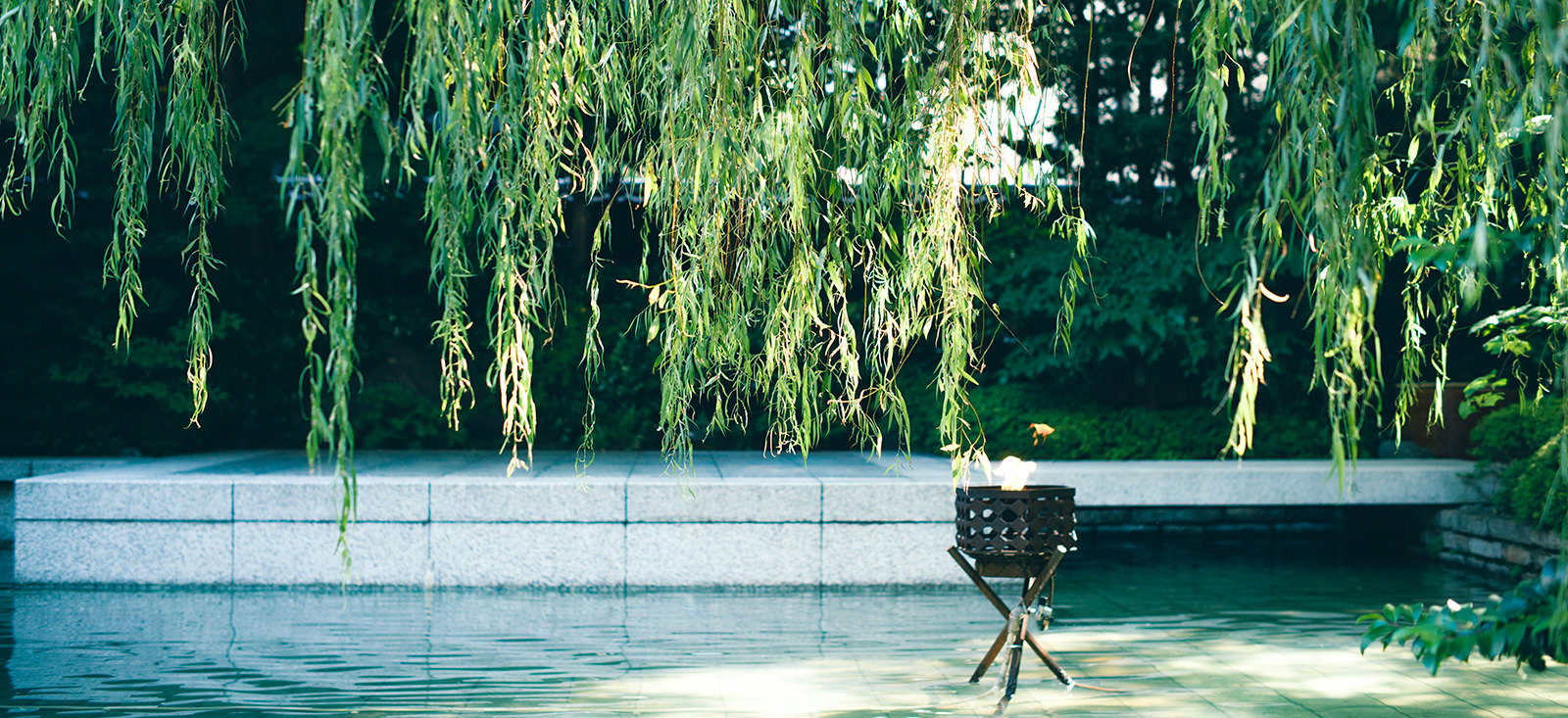Carrying on a 400-year tradition: Nagoya’s oldest restaurant, Kawabun
It all began in the Edo period with the building of Nagoya Castle and the attendant transfer of the local urban center from Kiyosu to the new city of Nagoya, with its checkerboard layout.
A man called Kawachiya Bunzaemon was among those who made the move.
He went into business selling fish, but after coming to be recognized as a connoisseur by the Owari House of Tokugawa he embarked on a historic career as a caterer and restaurateur.
His restaurant survives as the oldest in Nagoya and the only one that has been in business since the Edo period.
We today cherish the traditions handed down to us while creating a vibrant new dining culture suited to the times.

Aesthetics
At bottom is the desire to inherit and celebrate Nagoya’s proud history and culture. The main part of the building is a work of sukiya-style architecture by Shinoda Susumu and Kawaguchi Kiyoe, who also designed the old Misonoza Theater. These masters, the leaders of Nagoya’s architectural world, produced a structure that is now one of the nation’s Registered Tangible Properties.
The courtyard and the dining room Mizukagami no Ma were designed in 1971 by Taniguchi Yoshiro, known as the Great Master of Modern Architecture, having been commissioned through the good offices of the prominent businessman Tsuchikawa Motoo. Afterwards, the stone sculptor Nagare Masayuki undertook the elaboration of the garden. Working from the concept of a tokonoma alcove floating on water, he created a stone tokonoma that can be used as a stage. A towering beech tree, planted to mark due south when Nagoya Castle was built, stands at the back of the garden. Beneath its branches, we present classical performing arts such as Japanese dance, Noh, and Kabuki twice a year.
In days gone by, Kawabun entertained honored guests from Japan and abroad as Nagoya’s guest house for foreign dignitaries. We carry on that tradition today as something more than a restaurant: a new kind of gathering place, and a celebration of culture.

History
This is a long-established restaurant dating from the first half of the 17th century. Its history begins after the building of Nagoya Castle. The founder of the Kawachiya Bunzaemon line was among those moved from Kiyosu to the new city of Nagoya, with its checkerboard layout, in the transfer of the local urban center. He first opened a fishmonger’s called Kawachiya. Then, after the fish he presented in tribute to the Owari House of Tokugawa won high praise, he became a caterer and restaurateur. In the Edo period, the street called Uonotana-dori was lined with four eating establishments: Onaya (established by Onaya Niemon), Kinnao (established by Ohmiya Naokichi), Ohmata (established by Ohno Mataemon), and Kawabun. These came to be known in the neighborhood as The Four Eaves of Uonotana.
About the 1820s, geisha began to entertain at the drinking parties held at ryotei (restaurants), and in 1873 a union of geisha called "Seieiren" was born in Kami Choja-machi. Kawabun became the establishment where Nagoya’s best geisha appeared and was thereafter sometimes called "Kawabun, place of gei (art)".
Since the Meiji era, it has been the foremost guest house in central Japan, and has been visited by many important people from Japan and abroad, including successive prime ministers such as Hirobumi Ito, Shigeru Yoshida, and Kakuei Tanaka, as well as former French President Mitterrand. It has been loved by many famous people, and in 2019, it hosted a dinner hosted by the foreign ministers of the G20 Aichi-Nagoya Foreign Ministers' Meeting, which was held in Nagoya City.

Lore
That which changes gradually with the background of the times in the history of 400 years is also a trajectory in which successive masters continue to challenge and change in order to pass on culture. Currently, the inside of the hall has been refurbished so that you can use it as a shoe suit. To make it easy for guests who use wheelchairs and canes to spend time with their babies, we have chair seats as the mainstream, and we are working to improve the friendly environment for customers from overseas.
What matters most is the spirit of hospitality.
In addition to cuisine prepared with the utmost care, we always want to provide you with a special place to spend your special moments.
That feeling is one thing that doesn’t change with the times.




